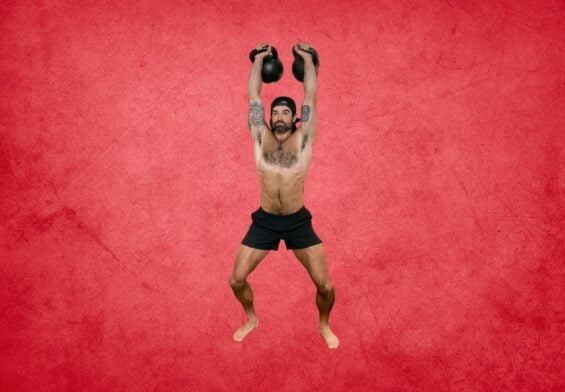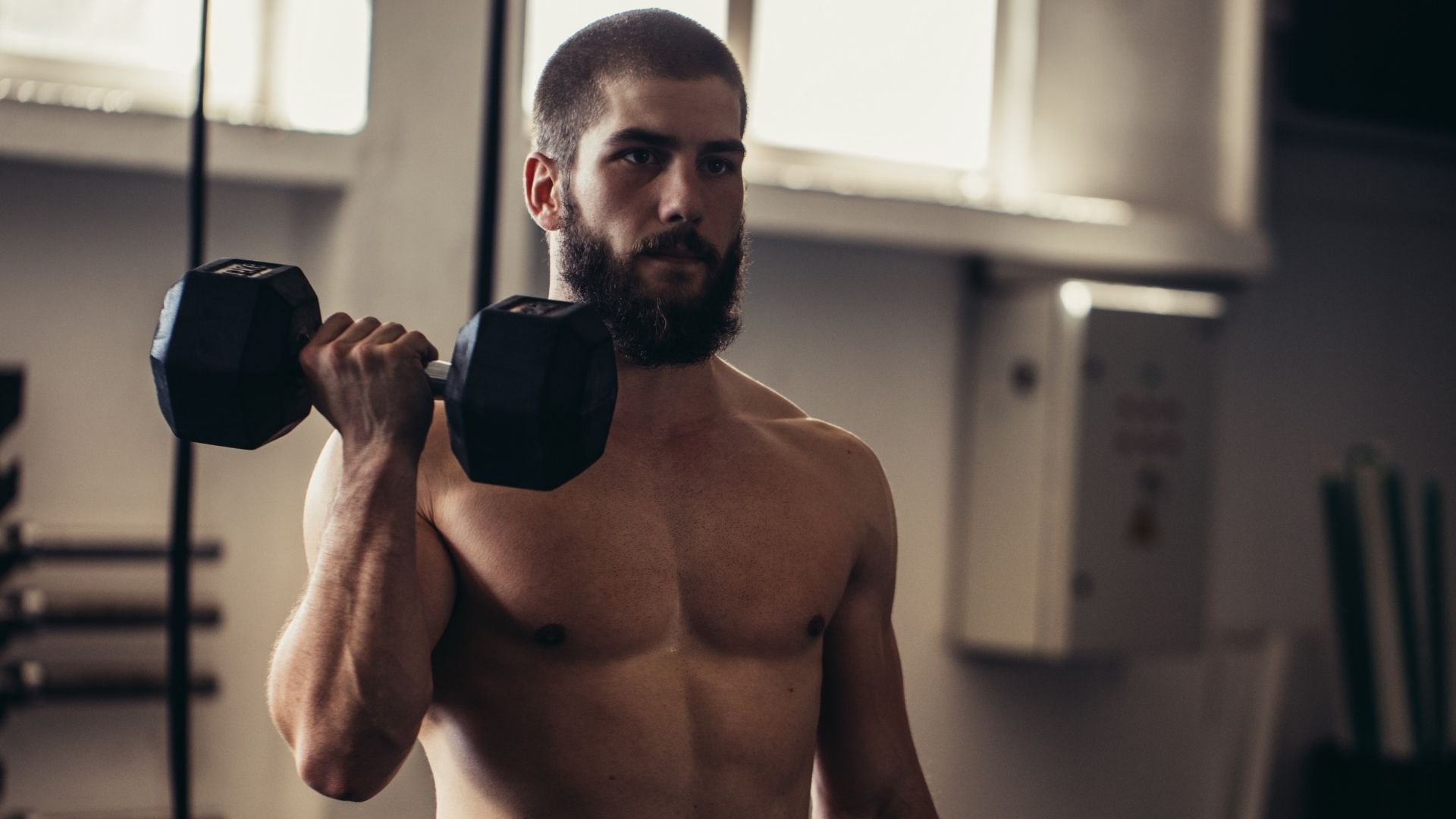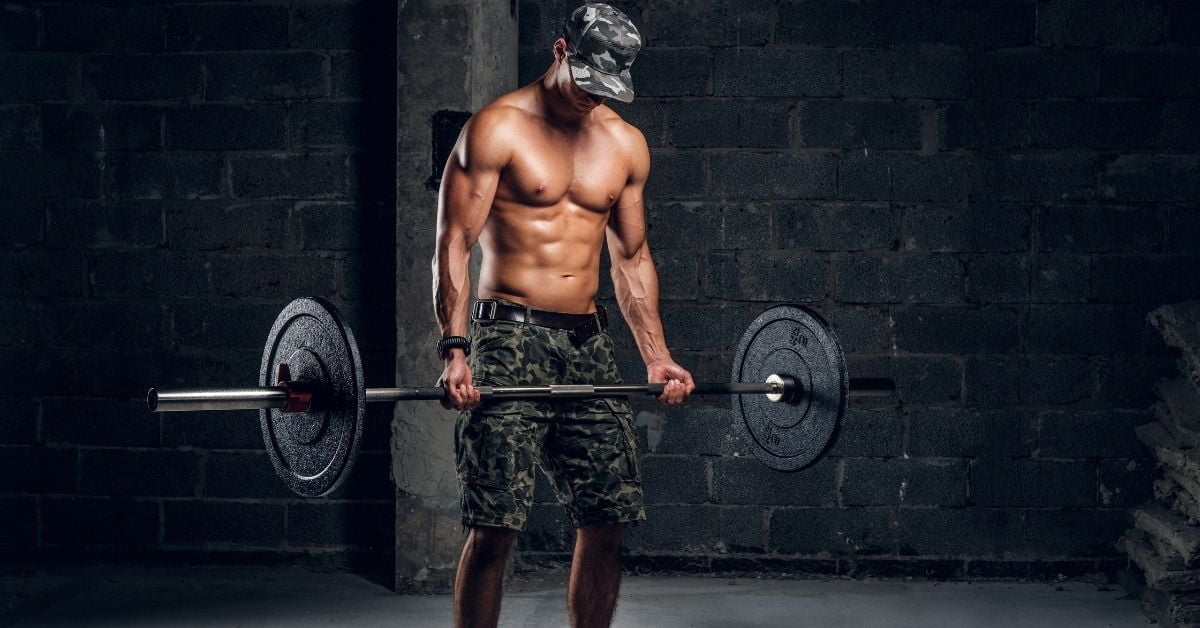
High Bar Squat Vs. Low-Bar Squat: Which Is Better?
Squats are a great exercise for beginners, professional weightlifters to athletes.
They are a useful and efficient lower body exercise.
There are many variations of squats.
You can do them with or without weight.
You can use dumbbells, barbells, kettlebells, or machines to increase the intensity and load.
Or, you can simply use your body weight.
You can do back squats by placing a bar across the back and lowering your body toward the ground.
There are two ways to hold the bar: high up on your upper back or lower on your midback.
Knowing the difference between a high and low bar position is crucial.
This can have an impact on the muscles being worked.
This is how you can decide which version suits your goals best.
What Is A High Bar Squat?
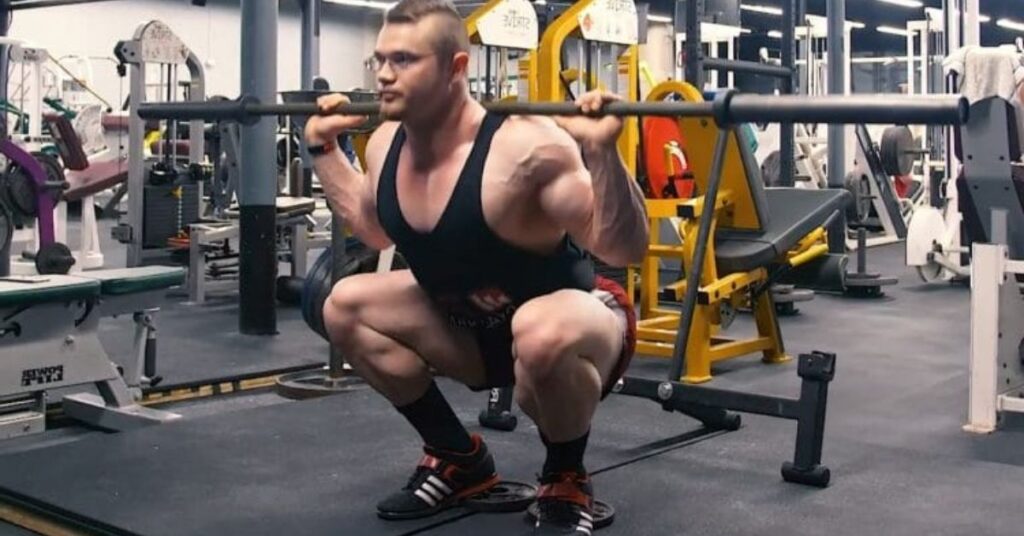
High bar squats are back squats where the bar is placed high above the trapezius muscle at the top of your shoulders.
With toes slightly outward, the feet should be shoulder-width apart.
The bar should be placed over the middle foot to balance during squat movements.
To properly descend into a squat position, you must place the bar higher than your back.
What Is A Low Bar Squat, You Ask?
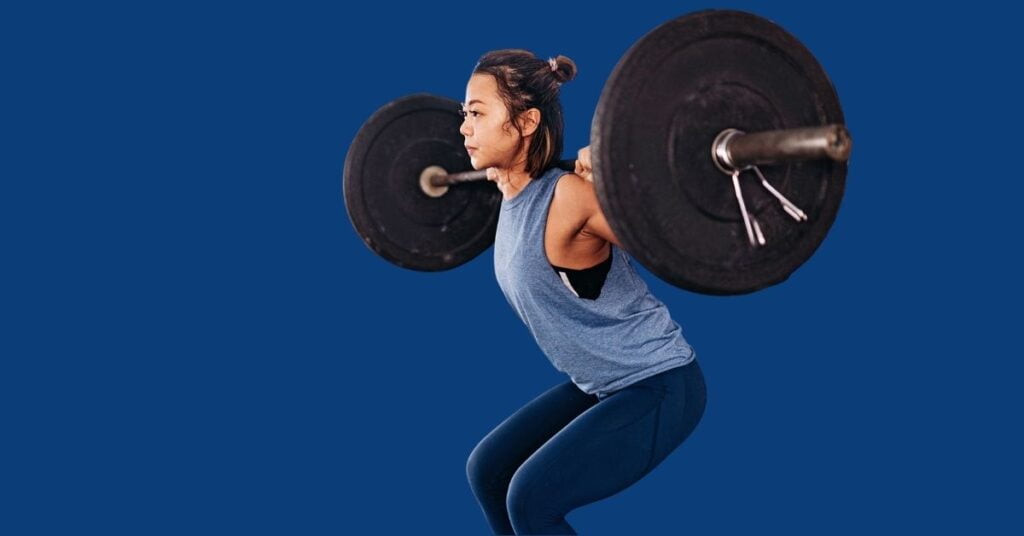
Low bar squat refers to a squat where the bar is placed low on your upper back during the back squat position.
The bar should rest on the posterior deltoid and not the top of your shoulders.
For this move, the feet should be shoulder-width apart.
To maintain balance in this squat position and maintain a straight bar path above the midfoot, bend at the hips immediately.
To avoid falling backward, this causes you to lean forward with your torso.
High Bar Back Squat
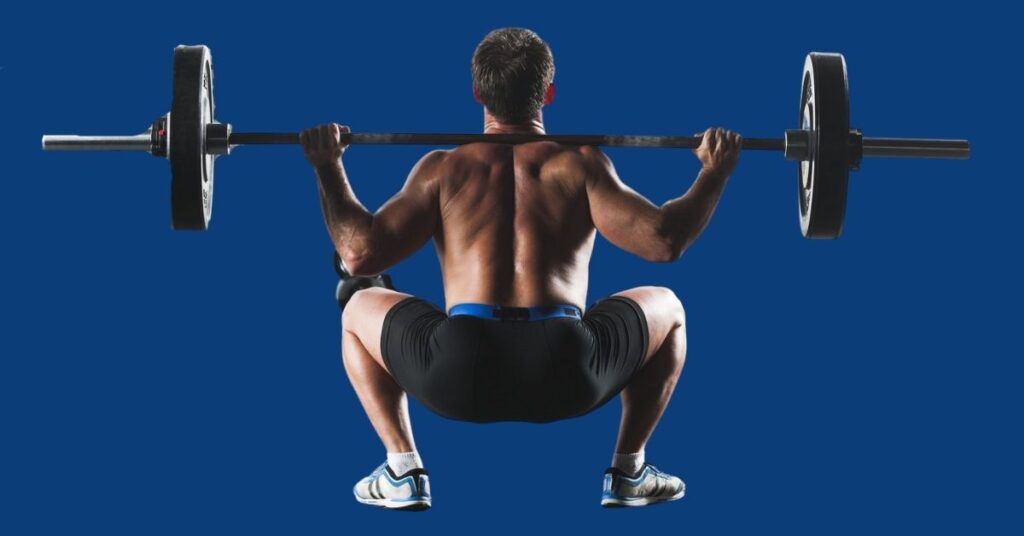
The high bar squat will be the first version of a standard barbell squat when starting training.
Although many people will simply step under the barbell and place the bar on their shoulders, it is more complex than that.
As you reach the bar, ensure you are centered.
This applies to both your body and the bar position.
Place your feet shoulder-width apart and brace your core.
Then, place your hands on the bar at your shoulders.
Your shoulders should be away from your ears and engage the traps.
This will help to lower the tension in your upper back.
To unrack the bar, stand.
After the bar has been removed, take a step back and reposition your feet.
As you lower into your squat, press your knees out (rather than letting them fall in).
Keep your torso upright so that the bar remains vertically above your midfoot.
Once you reach depth, your feet should touch the ground.
Then, stand up again.
Repeat the process:
Re-brace your core.
How To Do The Low Bar-Back Squat
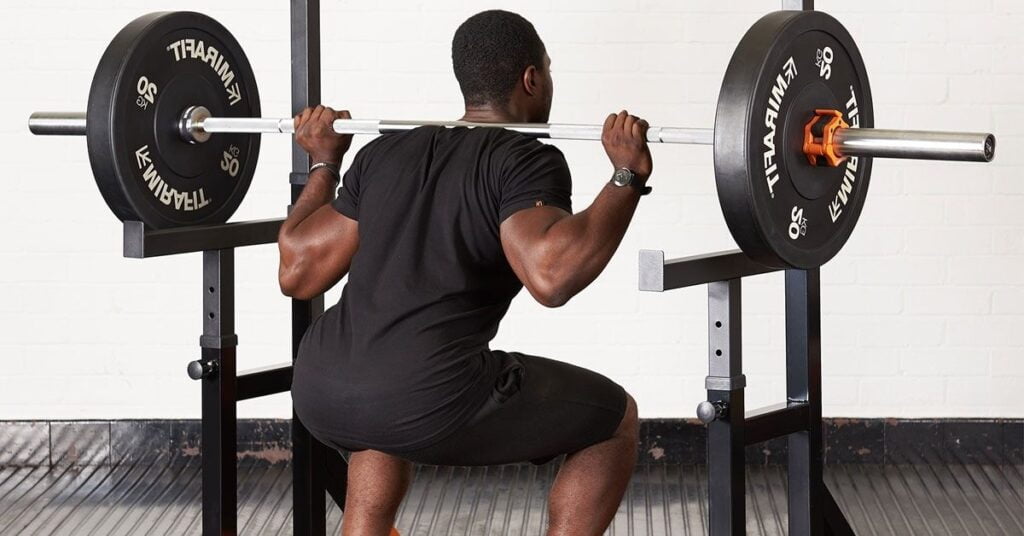
You’ll see a lot of similarities in your setup.
As you stand up to the bar, ensure you are centered.
Place your feet slightly wider than your shoulders apart.
Brace your core.
Move your elbows behind you, and engage the lat s.
This will create a shelf with your rear deltoids.
That’s where you’ll pin your bar.
Depending on your shoulder mobility, you might need to position your hands a little wider than shoulder width.
However, try to keep your arms as close to your body as possible.
Keep the bar firmly in your back.
Once unpacked, it shouldn’t feel loose.
Keep your feet under the bar.
It is important to lean slightly forward.
To remove the bar completely, stand.
After the bar is fully unracked, take a step back and reposition your feet.
As you lower into your squat, press your knees out instead of letting them buckle in.
Once you reach depth, your feet should touch the ground.
You may find it tempting to lift the bar with your torso, especially if your hips are moving too fast.
Don’t. Do not.
Repeat the process:
Re-brace your core.
The Benefits Of A High-Bar Squat
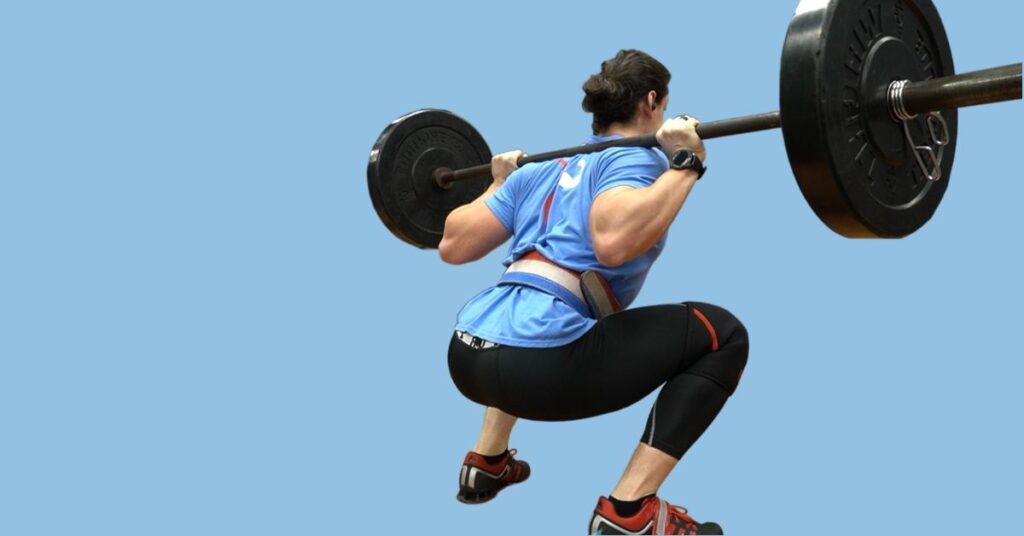
This type of squat is based heavily on quadriceps strength.
This is a good exercise to do if your goal is to strengthen and increase muscle mass in the quadriceps (the muscles at the front of your thighs).
Because the knees must extend further than the ankles to reach a squat position, it’s best to have good ankle mobility.
This also puts less strain on the lower back, and it is easier to balance than in a low-bar squat.
From the beginning, the bar is naturally above the midfoot.
Drawbacks To The High Bar Squat
High bar squats have their drawbacks, just like any other exercise.
The body must remain in a vertical position during a high-bar squat.
This prevents clients or athletes from lifting as much weight as possible with the low-bar squat.
Because of the greater depth, you can reach in a high-bar squat, your hamstrings are less active.
Clients may experience knee pain.
The high bar position might not be the best choice if a client has had knee problems in the past.
Any underlying knee issues could be exacerbated by force pushing forward.
This could lead to further knee pain. Squats are good for your knees unless you have suffered from an injury.
Any client who experiences knee pain can be used to correct it.
This type of squat is knee-dominant due to many factors.
In a high-bar squat, the bar is far from the hips.
This decreases the moment arm.
It increases the distance between the knees and the bar.
It is, therefore, more knee-dominant.
The distance between a joint or force and their moment arm is called the moment arm.
High bar positions make external loads feel heavier, which causes muscles to contract more.
The Benefits Of A Low-Bar Squat

This squat style focuses more effort on the posterior chain, which includes the glutes and back extensors.
This position places less stress on the quadriceps and the posterior chain muscles.
This position is ideal for people who want to strengthen their glutes and activate the hamstrings.
This version recruits more muscles.
A low-bar squat can help people lift heavier weights, increasing their strength.
A low-bar squat is also beneficial for people with limited ankle mobility.
The knees are not required to move as far in front of the ankles, decreasing the flexion angle.
Drawbacks From Low Bar
Although the low bar squat may sound better for athletes, it is difficult for most people to sustain.
It is dependent on your hamstrings, which is not the case with the high-bar squat.
It could lead to problems when an athlete has poor hamstring flexibility or strength.
To sit low on the bar, you need to have a lot of shoulder mobility.
The bar won’t be able to sit in a secure and safe position if it is not.
Athletes often complain of wrist or elbow pain.
These athletes compensate for lack of shoulder flexibility by using these areas.
It is also a hip-dominant movement.
This is the moment arm that connects the hips with the barbell.
It is usually increased during a low-bar squat.
The moment the arm extends between the bar and the knees is greater.
Form Differences High-Bar Squat And Low Bar Back Squat
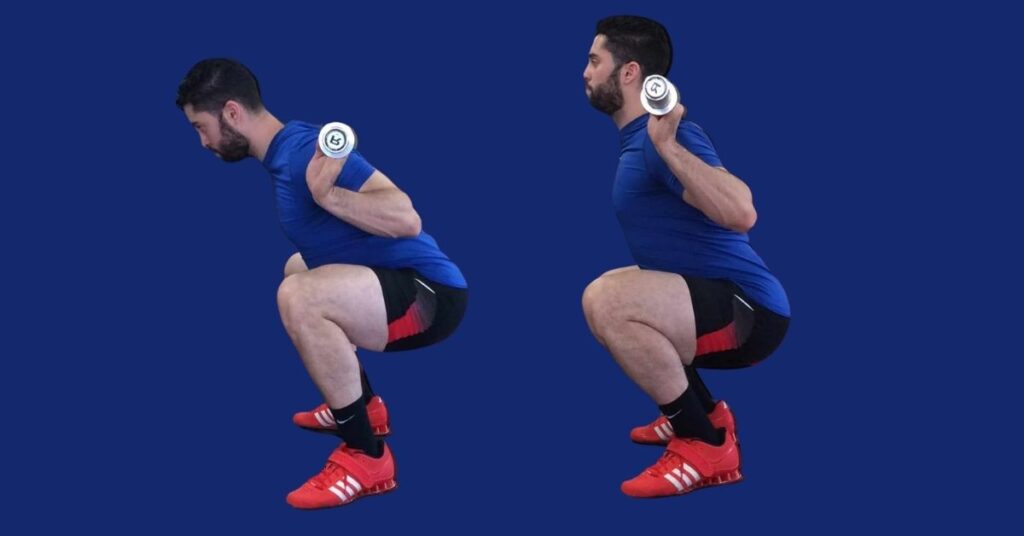
The bar placement on your back is the main difference between low-bar and high-bar squat.
The high-bar squat is done by placing the barbell on the top of your shoulders just below the C-7 vertebrae.
You’ll often hear people cue high bar squat placement with the phrase, “Use your traps for a shelf for this bar.”
Low-bar squat positions the bar lower on the back than the shoulder blades.
Low-bar squat placement can be referred to as “Lay the bar across your posterior deltoids (backs off shoulders).
” This will also create a “shelf,” but lower down.
Low-bar squats will require you to “pin” the bar to your back rather than “sitting” there.
Differences And Similarities Between High-Bar And Lower-Bar Back Squat

The bar should always be directly above your midfoot, whether you are high-bar or lower-bar squatting.
The low-bar squat will cause a slight forward lean.
Because the bar will be pinned into your shoulder shelf, you will have the bar placed behind you.
You will need to lean forward slightly to ensure the bar is above your center.
The high-bar squat places the bar slightly above your midfoot by placing the bar onto your traps.
Regardless of the method, you should aim to keep your vertical bar path higher than your midfoot.
You’ll be following the same movement patterns and bar path with both moves.
Feel it in your glutes and hamstrings.
Quads will also feel it, no matter if you’re low-bar or high-bar.
Like squatting, any type of squatting will tax your central nervous system and put your core to work.
Performance Differences High-Bar Vs. Lower-Bar Back Squat
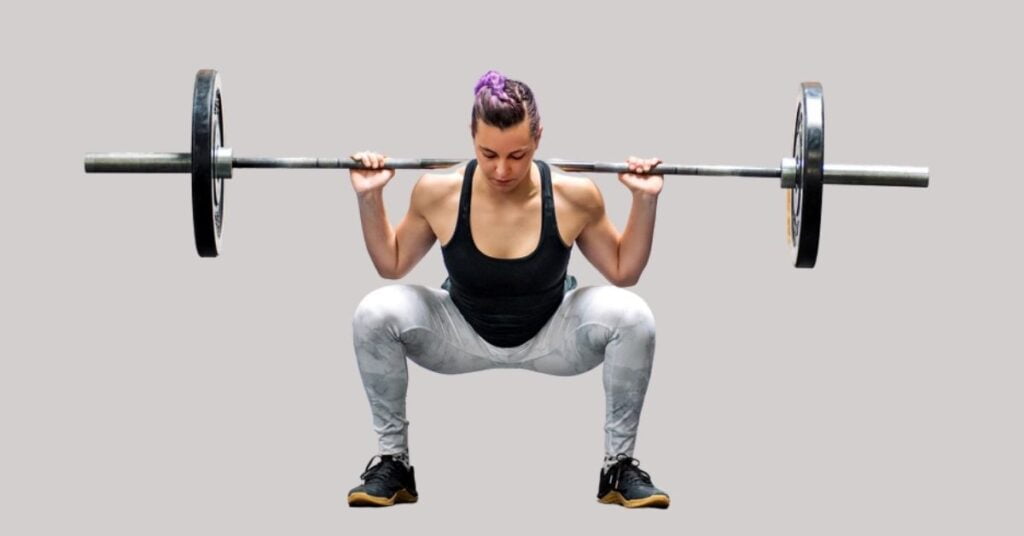
General Strength
Both versions of the back squat will make you strong.
However, if you want to fine-tune the training, some key differences are.
In 2020, a study compared posterior-chain muscle activation for low-bar and high-bar back squats.
The bioelectrical activity of 12 experienced powerlifters was measured by researchers.
This was the first study to measure muscle activation in the same lifters without moving the electrodes between tests.
Low-bar back squats elicited greater muscle activity during the eccentric portion of the squat.
Low bar squats activated the gluteus maximus (hamstrings) and the biceps femoris (hamstrings) more than high bar squats.
The eccentric portion of the low-bar squat also saw greater activation of the vastus medialis, rectus, and vastus lateralis (quads).
The differences in quad squat type were negligible.
It is important to note that this study was limited to young powerlifters who were already competing or in training for their first meet.
The majority of powerlifters train lower-bar back squats than the high-bar version.
Therefore, the participants might have had more experience with low-bar squats than those who trained high-bar.
People of different genders and training levels may experience muscle activation differently between lifts.
The low-bar back squat can be more effective in strength training because you can usually load the bar with more weight.
The low-bar squat is worth considering to increase your one-rep max if you are squatting.
Muscular Hypertrophy
Both types of squats can be done in slightly higher hypertrophy levels.
This is especially true if your goal is muscle growth.
The 2020 study above showed that low-bar back squats activated your glutes more than the high-rep hypertrophy ranges.
It might seem obvious that you should increase the number of low-bar reps if you want to build muscle.
This sounds reasonable, provided you maintain good form.
Your lifting history, hip mobility, and length may influence how likely your form will fail while performing longer low-bar back squats.
You may find yourself in bad morning squat territory if you lift heavy and do low-bar squats.
High-Bar Back Squats
For many reasons, high-bar squatting can be very beneficial.
This is the simplest form of squatting.
It resembles an “athletic position/stance”.
It will be beneficial to transfer the high-bar squat into weightlifting or other sports.
William Quillman is a Strength & Conditioning coach based in Colorado Springs.
He is C.S.C.S.S.S. U.S.A.W. He answered a question about the differences between high- and low-bar squats.
To ensure a high level of transfer into competition movements when squatting, it is important to be as precise as possible.
High-bar squats are common in weightlifting because they allow athletes to train with similar torsos, hips, knees, ankle angles, and movements to competitors.
An athletic stance can refer to starting or moving in sports.
The position requires the athlete to stand with their feet shoulder-width apart, with their hips below them and their knees slightly bent.
An athlete can strengthen their body by performing a high-bar squat.
This is similar to an athletic stance.
Low Bar Back Squats

Low-bar squats are often used for two reasons:
To move more weight and increase the load on the posterior chains.
The squat style increases the load on the posterior chain by forcing the hips to move more weight and absorb more force.
This creates a forward lean in the chest, allowing athletes to lift heavier weights (an upright torso can limit your body).
Quillman explains that low-bar squats are used for powerlifting as it allows you to show strength in the squat movement.
The torso can be shifted horizontally while the loads are closer to the posterior.
This allows glutes to be more involved while loads shift into the posterior.
It requires less range than the high-bar squat.
This squat style is easier to do and allows athletes to lift more.
The hips can be pushed back to reduce stress on the knees, which results in a shorter range of motion (not as forward-over-toes).
This shifts much of the weight’s burden to the hips and glutes and the hamstrings.
The hamstrings will pull back on the tibia (bone of the lower leg) to balance the load on the knee.
Low-bar squats are a good option for athletes who have knee problems.
Selecting The Best Squat Variation Based On Symptoms
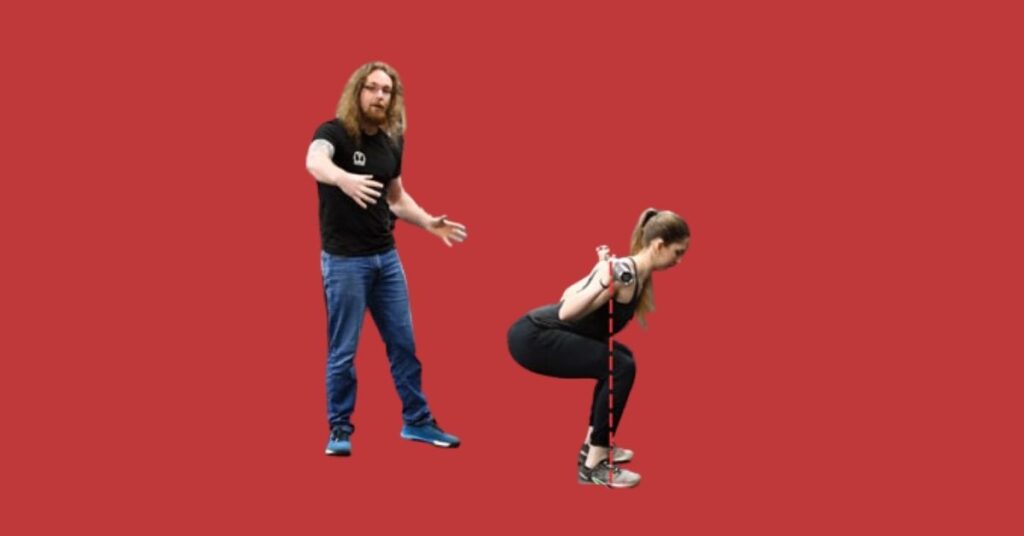
Modifying the bar position while you squat can help to ease the pain.
Let’s now talk about the most common pains associated with squatting.
Squatting With Knee Pain
The high bar squat is more likely to cause forward knee translation than low bar squats, so it might not be the best option for someone with knee pain.
Let me start by saying that it is OK for your knees to move forward in the squat.
It’s actually necessary to optimize the mechanics and performance of the high bar, especially the front squat.
If you have knee pain, this position may not suit you.
You can temporarily switch to the low bar squat to allow you to train in a more tolerable way if that is the case.
After your knee pain has subsided, you can return to the high-bar squat.
Is our complete guide to how to relieve knee pain while squatting.
Squatting With Elbow And Shoulder Pain
How to deal with elbow or shoulder pain while squatting?
The high bar variant is more effective than the low one in this instance.
The low bar squat requires more shoulder mobility and strain the elbow.
This is fine if your elbow or shoulder pain is not a problem.
However, the low-bar back squat may worsen if you are symptomatic.
This article will provide more information about relieving elbow pain from the squat.
Hip Pain
One of the most common complaints that I see is hip pain when squatting.
It’s something I have personally dealt with.
This topic is something I have written extensively here as well here.
The bottom line is that if you have hip pain, the low-bar squat might not be the best option.
Because the forward torso angle “closes off the hip joint.”
If you are a powerlifter and low train bar frequently, try high bar squats for 4-6 weeks until you feel better.
High Bar Squat Vs. Low-Bar Squat: Which Is Better?

Both types of squats can be used for different purposes.
A high-bar squat is best if you want to increase power and strength in other exercises like power cleans or snatches.
A low bar squat is a good choice to strengthen your posterior chain muscles, increase your one-rep max, and challenge balance and core strength.
Low bar squats have one disadvantage: many people lack the balance and shoulder mobility to keep their proper position during the exercise.
A combination of poor body mechanics and a heavy load can lead to injury.
Last Words

The best squat is one you can do in good form.
Next Steps
Squats are a common exercise used by strength coaches, fitness trainers, physical therapists, and other health professionals.
Squats are a primary functional movement with many benefits in the gym, sports, and everyday life.
Low bar, high bar, and low-bar squats increase strength in the lower back, core, and back.
They improve balance, coordination, range of motion, and coordination.
People of all fitness levels can do high bar squats, while those skilled at low bar squats will benefit more.
These squats are best for experienced lifters looking to improve their fitness programs.




